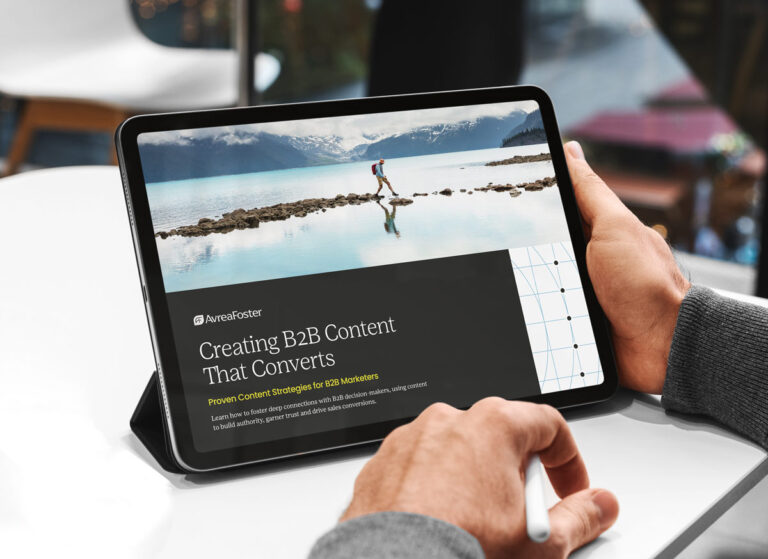Months of research and discovery have resulted in a powerful brand transition strategy. Leadership has aligned around an evolved brand narrative and visual identity. You feel confident — giddy even — as you consider the possibility of reaching the company’s business objectives using the might of its post-acquisition capabilities. All that’s left to do is shout it from the rooftops. But that theme line from the fictional movie that suggests, “if you build it, they will come” is just that — fiction. To ensure success comes from all the work you put behind integration, you have to first inspire employees to market the brand from the inside out. Over time, this will create momentum behind external efforts, expanding the brand’s customer base, market reach and profitability.
If you’re an experienced B2B marketer or brand manager, you already know the whys and hows of launching a brand, whether a startup or a recently refreshed legacy brand. But things shift slightly in the M&A arena. Employees and customers have had time to question the merger. Peer companies have begun poaching your talent and, perhaps, messaging to markets that they are at least equal to the value proposition they predict your brand will promise. Once again, careful planning must be taken to crafting and executing a multifaceted communications strategy.
While the intricacies of such a plan are unique based on the business, and the tactical efforts included in each phase might change based on resources, AvreaFoster can summarize objectives into three progressive systems of communication.
01
Communication system one: Creating fully aligned brand ambassadors.
In a traditional brand launch, the main goal is to rally employees around the new look and narrative in order to ensure consistency in market. In a post-acquisition scenario, companies need to first create alignment between legacy employees and those from acquired companies. Communications should be less about bringing the acquired brand into the legacy fold and more about everyone resetting — even if the decision was made to maintain certain assets, such as the legacy brand name or look. The fact remains, the DNA of the business has been altered for the better — and that means a new way forward for everyone, a new promise and a new role for employees to play in fulfilling that promise.
Likely there has already been communication around the value that the acquired business brings to the legacy brand and vice versa. The internal launch of the brand is an ideal time to repurpose that language. In addition, leveraging quotes or snippets from stakeholders involved in the discovery process, (as part one in this series suggests) can make for a powerful ramp-up to revealing new or evolved assets —whether in the brand identity, vision and values, or sales enablement tools.
AvreaFoster’s internal launch efforts often include:
- Internal communications strategic planning
- A launch video to be shown at an all-company town hall
- Executive leadership talking points for an all-company town hall
- Environmental graphics to support new messaging and brand visuals
- Internal campaigns to engage employees and reinforce key messages
- Promotional items with purpose; i.e., those that support brand and culture
- Strategic support of traveling road shows to reach various company locations
02
Communication system two: Delivering added value to customers.
Hopefully, customers have been communicated with prior to the formal launch of the fully transitioned brand. AvreaFoster often crafts emails and scripts to quell any immediate concerns on either side of an acquisition (acquired or acquirer), whether those concerns are around continuity of service, changes to daily contacts or the implementation of new technologies. The formal launch of the rebrand, however, serves a different purpose. This is the moment of truth, when the business has the opportunity to communicate its commitment to doing what it takes to deliver value to all its customers, including those it has newly acquired. While previous communications might have come from a direct sales or relationship manager, these communications should come from leadership, convey one voice and a renewed focus on one vision.
Strategic acquisitions are driven by the market advantages of combining companies — the benefits of which should extend to customers. While you may have communicated new or more advanced offerings to customers at the beginning of the acquisition, the brand launch should personify that value, delivering the anatomy of the new brand through the lens of the customer.
To do this, the AvreaFoster team often applies key questions to answer in customer launch communications, such as:
- How does the brand’s new positioning address current challenges and future needs for customers?
- How does the company’s evolved vision, mission and values change the brand experience for the better?
- How does the refreshed brand look and/or new name reinforce the commitment the company is making to customers?
- How does the new website support the experience customers seek?
The idea is to leave customers with a feeling as much as it is a clear articulation of what is new and how those distinctions will make all the difference for customers.
03
Communication system three: Signaling to the greater market.
With current customers retained and employees equipped to communicate a new value proposition, it’s time to cement the new and improved brand in market in order to attract new buyers. Getting to this point in the rebrand strategy is a huge accomplishment. While it will require additional marketing budget, the results can be tenfold the investment.
In order to manage the brand transition in a way that minimizes market confusion, it’s important to launch a brand campaign. This is designed to educate all external stakeholders on key changes in the brand, whether that’s a new name, new visual identity or new capabilities. The idea is to level-set audiences on the evolved brand and gain interest into what that change means for them. Trafficking digital ad click-throughs to a landing page or key page on the website is critical to engaging users and pushing them further through the sales funnel. It’s also an important aspect of being able to measure success of the campaign and address how messaging or design might need to be adjusted to optimize engagement rates.
Run concurrently with the brand campaign or as a phase two, the company should target new customers. Leveraging insights from customer research and segmentation done in the initial discovery phase, more targeted digital campaigns can address the brand’s most valuable audiences — those in ideal markets, of a certain company size or more likely to purchase key offerings the company wants to market. Directly marketing to these groups as the new and/or improved partner of choice can unlock tremendous value for the company. It also serves to support overall brand awareness and referrals.
Conclusion
Next Steps
AvreaFoster has significant experience and interesting case studies to share with brand and marketing leaders interested in understanding more about managing brand momentum post M&A. Let’s talk.



